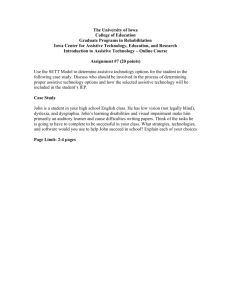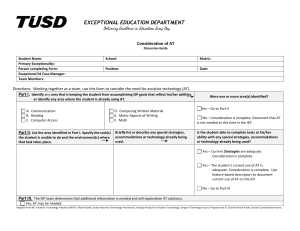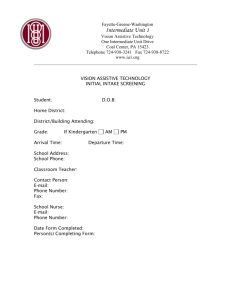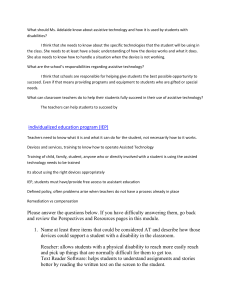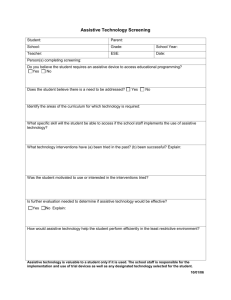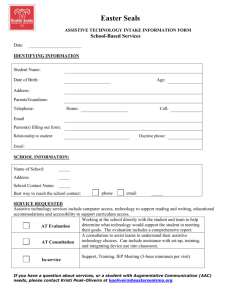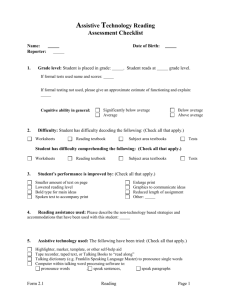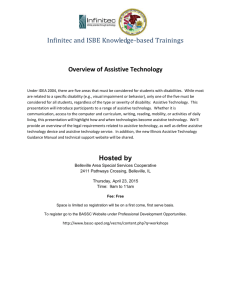What is Assistive Technology
advertisement
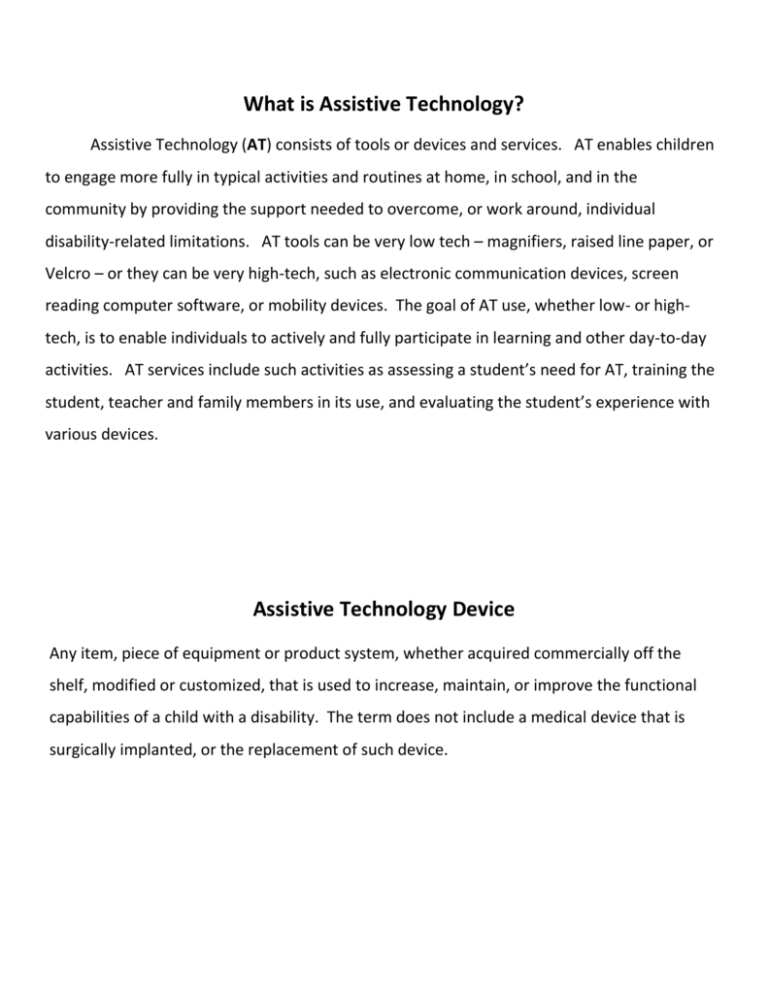
What is Assistive Technology? Assistive Technology (AT) consists of tools or devices and services. AT enables children to engage more fully in typical activities and routines at home, in school, and in the community by providing the support needed to overcome, or work around, individual disability-related limitations. AT tools can be very low tech – magnifiers, raised line paper, or Velcro – or they can be very high-tech, such as electronic communication devices, screen reading computer software, or mobility devices. The goal of AT use, whether low- or hightech, is to enable individuals to actively and fully participate in learning and other day-to-day activities. AT services include such activities as assessing a student’s need for AT, training the student, teacher and family members in its use, and evaluating the student’s experience with various devices. Assistive Technology Device Any item, piece of equipment or product system, whether acquired commercially off the shelf, modified or customized, that is used to increase, maintain, or improve the functional capabilities of a child with a disability. The term does not include a medical device that is surgically implanted, or the replacement of such device. OCALI Considerations for Assistive Technology Student Name Date Individual or Team Members Participating Place a check mark in any area(s) where there is concern about the student’s functioning as independently as possible. Academics reading writing math learning/studying Communications understanding language using language computer access mobility speaking clearly Access seating and positioning environmental control Activities of Daily Life play recreation/leisure self-care vocational Social Behavior following routines and rules staying on-task Vision Hearing Other making transitions Questions to Ask When Making an AT Decision 1, What specific task(s) in the area checked do you/we want this student to perform that he/she/ is unable to do so because of their disability? 2. What current special strategies, accommodations or assistive technologies have been tried to enable the student to complete this task? (Include in the Present Level of Performance) 3. Are there continuing barriers when the student attempts this task? If so, describe. (Include in the Present Level of Performance) 4. Are there new or additional assistive technologies to be tried to address continuing barriers? If so, describe. (Document in the Services, section 7, if the IEP.) 5. Is there a need for further investigation and/or assessment to determine assistive technology solutions? (Describe this plan and document in the Services, section 7, of the IEP.)
